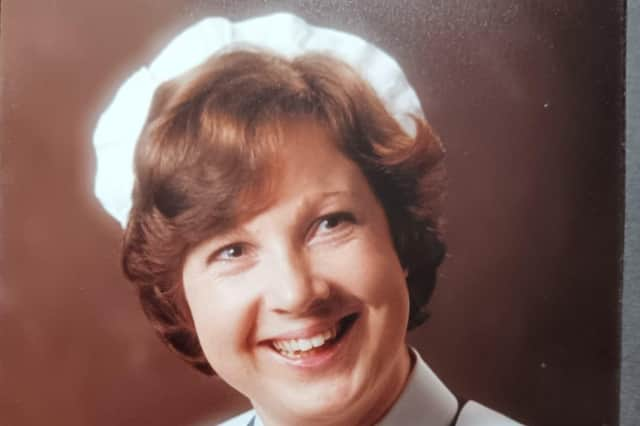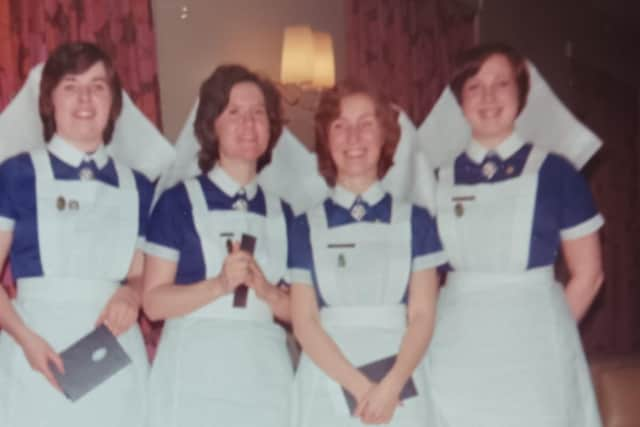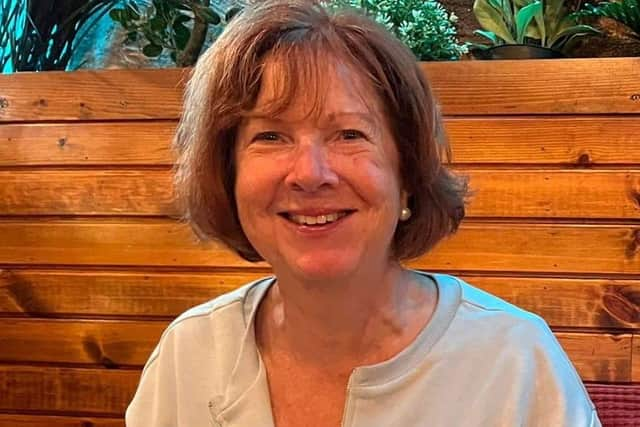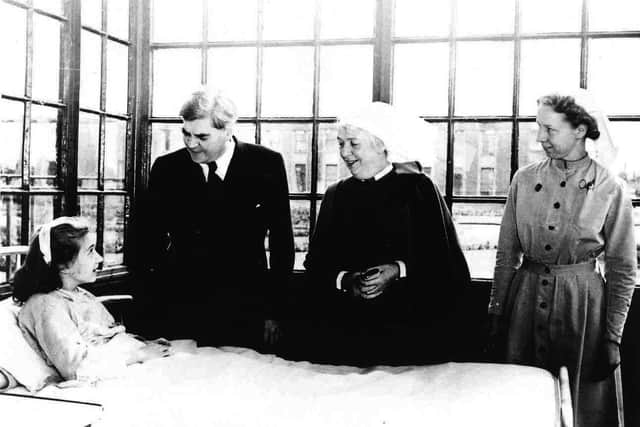NHS 75th anniversary: Retired NI nurse Margaret on starchy uniforms, working through the troubles and today's strikes over pay and conditions


"You were always expected to look as neat as ninepence”, says Margaret Graham, who in her decades as a nurse, has witnessed many aspects of the NHS change – from the shrinking power of matron to amazing improvements in treatment, right down to the clothing worn on the ward.
"We were starched from head to foot. There was a detachable collar that was starched and kept it in place with a stud. Everybody would get a red mark on their neck, so you put an elastoplast behind to try and keep the wings of the stud in place.
Advertisement
Hide AdAdvertisement
Hide Ad“Putting the student hats together was a bit like origami – they were pinned and starched and twisted every which way. But you felt a different person when you put the uniform on.”


Margaret, 70, who is originally from Fermanagh, but lives in Dunmurry, is currently chair of the Royal College of Nursing’s History of Nursing Network.
Unlike today’s nurses, her route into the profession was very different.
“I was part of the September 1971 intake to the Royal Victoria Hospital, and that was as a school leaver. I had done A levels but I wanted to be a nurse. A few years before I started the Royal had started a Combined Scheme – it was a dual course which gave you a qualification both in mental health and general nursing. Because of the colour of our uniform we were called the ‘Grey Girls’.”
Advertisement
Hide AdAdvertisement
Hide AdIn those days nurses not only trained together, but lived together until they were 21. Margaret stayed in a tiny room in Musson House on the Falls Road, which no longer exists.


"There was a bed, a basin, a chest of drawers and a wardrobe – and the sheets were the same as what the patients had on the ward. In the morning when you went on duty, you had to leave your room tidy with nothing sitting out. There was a kitchen with a kettle and saucepans chained to the wall. We all accepted it. There was great camaraderie and you made friends for life."
The nurses had to be in by 10.30pm and had two late passes in the month.
"I didn’t do it, but a lot of nurses climbed up drainpipes if they had been out late and there were always windows open somewhere for people to get in and out of after hours.”
Advertisement
Hide AdAdvertisement
Hide AdAfter six weeks in the classroom, Margaret said the student nurses were released onto the wards to learn basic tasks, such as making beds and washing patients.


And in those days it was the student nurses who were the hospital’s workforce.
“As a third year student you would have been in charge of the wards on night duty – from 8.30pm to 8am – that would have been two nightingale wards with some 30 patients in them that you were responsible for before you were qualified. I don’t think people would tolerate that nowadays.”
During her career, Margaret had many roles from working as staff nurse on the medical ward in the Royal, to midwifery, to junior ward sister. In 1979 she worked in Australia for a couple of years, returning to Northern Ireland to work in community health and then management.
Advertisement
Hide AdAdvertisement
Hide AdThe many issues nurses face today are well documented – the pay, the stress, the long hours – and Margaret can sympathise.
“There has always been a shortage of nurses. I think at one stage the RVH had a postal stamp that said ‘We need you’ – there was a push for married nurses to back to work, even part-time.”
When Margaret was a young nurse, she said they had fewer financial outgoings, than today’s nurses.
“We live in very different times now. As a student nurse, our uniform was supplied, it went to the laundry and was washed for us – nowadays people have to bring their uniform home.
Advertisement
Hide AdAdvertisement
Hide Ad“We had subsidised accommodation when we lived on site – money was taken out of our pay for rent – but it wasn’t that much. The food in the hospital was subsidised. In the 1970s in Belfast, there wasn’t a lot to be spending your money on – I think my first salary as a student was £33 a month.
"Students now are married, they are more mature, they have families – maybe a nurse is the main bread winner in the family. Whenever I was nursing, there were very few married nurses and there certainly wouldn’t have been a married student going through. I still remember the first nurse who was pregnant and was allowed to stay on.”
“I think there has to be a realisation that times have changed and there has to be a realistic sense around pay and the living wage.”
Margaret nursed during the height of the troubles and said the camaradie and teamwork got everyone through.
Advertisement
Hide AdAdvertisement
Hide Ad“The hospital was like one big family. During the troubles we just got on with it and supported each other. When there were bombs and bullets going off, people just appeared and lent a hand. We were always doing overtime that was never paid and you didn’t go looking for it. Nobody ever considered themselves suffering from stress or trauma. And there wasn’t a high incidence of sick leave throughout the troubles. People turned up for work. It became such a normal way of life.”
Medical advances mean that many aspects of care have undeniably improved
“Whenever I started nursing cataract patients had to lie on their back for 10 days – now it’s day surgery. Cardiac patients were anaesthised lightly and they were pulled out by putting paddles of cold water over them.”
Earlier still, bandages were washed and when they came back to the ward would have given them to the patients to roll up.
Advertisement
Hide AdAdvertisement
Hide AdShe adds that patient’s expectations weren’t as high when she was training as they are now.
"People do expect a lot out of the health service, but I think we all have to take ownership for our own health and what our expectations should be.”
And although Margaret believes the early founding fathers wouldn’t have anticipated the way the NHS has evolved, with waiting lists and various cuts, she looks back on her years as a nurse with much fondness.
"Nursing can be what you make it, but I just loved every part of my career. I had a glorious time.”